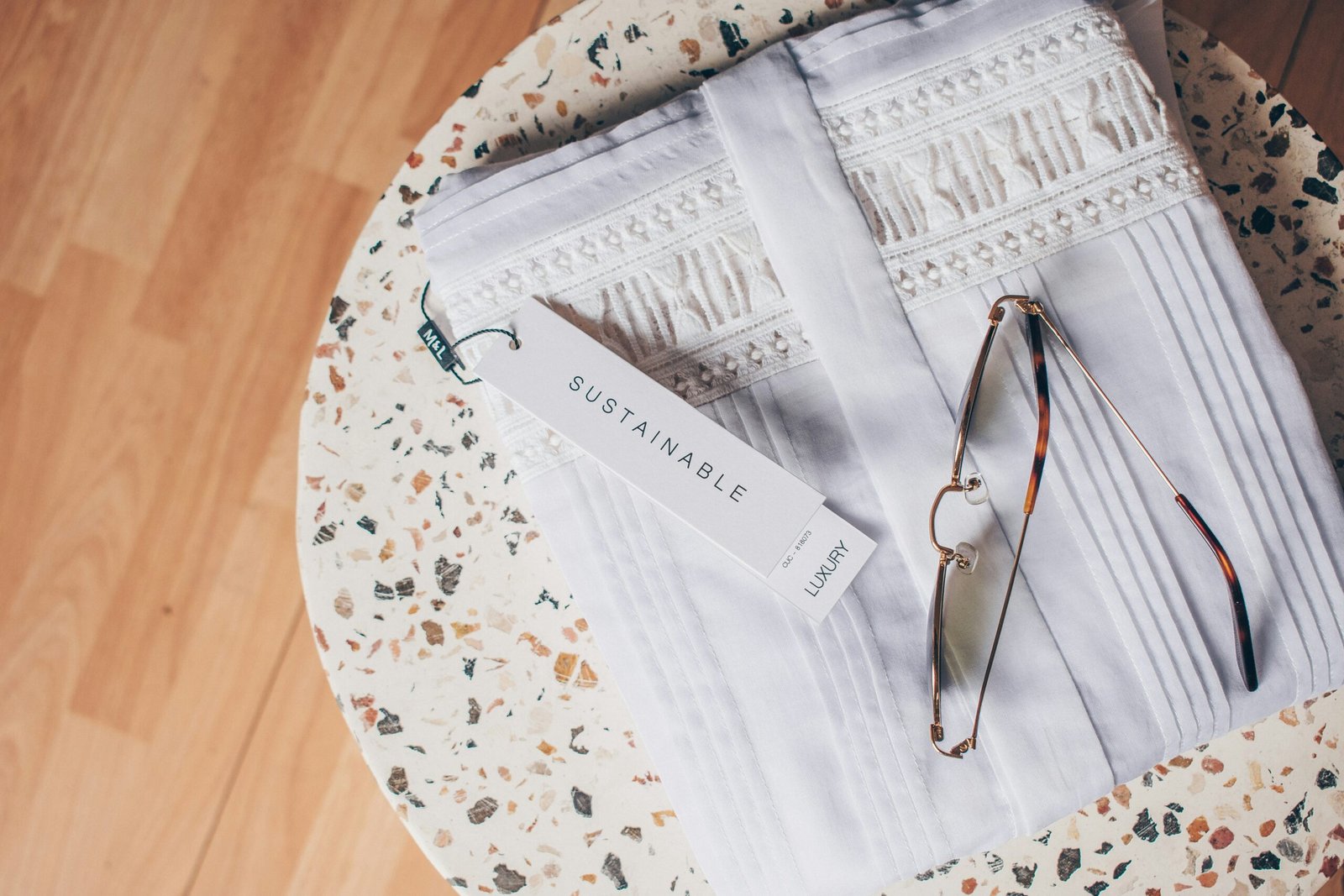Table of Contents

Introduction to Sustainable Fashion
Sustainable fashion, in broad terms, refers to a movement and process aimed at fostering change to fashion products and the fashion system towards greater ecological integrity and social justice. It encompasses more than addressing fashion textiles or products; it is an overarching approach that considers the entire process of fashion— from raw materials, manufacturing methods, to transportation and consumption practices. With the growing awareness of climate change and resource depletion, sustainable fashion has become a vital component of our overall strategy to mitigate the adverse impacts on our planet.
The fashion industry is one of the leading contributors to environmental pollution due to its intensive use of water, chemicals, and energy throughout the production cycle. The alarming rate at which we have been consuming and discarding fashion products has resulted in considerable waste, making it imperative to adopt practices that are environmentally sustainable. Integrating sustainable methods into our wardrobes significantly reduces this carbon footprint.
Embedding sustainable practices offers numerous benefits, not only for the environment but also for individuals and communities. For instance, favoring ethical brands that prioritize fair labor practices supports the livelihoods of workers and ensures that they are working in safe conditions. Moreover, opting for high-quality, durable garments can lead to reduced waste and cost savings over time, as these items often last longer than their fast-fashion counterparts. Additionally, sustainable fashion encourages creativity and individuality by promoting clothing through upcycling and vintage shopping, allowing individuals to express unique styles beyond current trends.
Ultimately, the adoption of sustainable fashion is more than just a trend; it is a responsible choice that contributes to the well-being of our planet. By making conscious decisions about our clothing, we advance towards a more sustainable future, aligning our daily habits with the broader goal of environmental stewardship.
Understanding the Environmental Impact of Fast Fashion
Fast fashion is characterized by the rapid production of high volumes of clothing, mirroring the latest fashion trends at low costs. This industry’s growth, however, comes at a steep environmental and social price. The fast fashion model promotes a cycle of quick consumption and disposal, leading to significant waste generation. According to the Ellen MacArthur Foundation, the equivalent of one garbage truck full of textiles is landfilled or burned every second. This contributes significantly to the burgeoning crisis of textile waste in landfills globally.
Water consumption is another critical factor. The fashion industry is notorious for its intensive use of water. A single cotton shirt, for example, requires approximately 2,700 liters of water to produce. The World Bank estimates that textile dyeing and treatment contribute to 20% of industrial water pollution. Additionally, microplastics shed from synthetic fibers during washing contribute to ocean pollution, affecting marine life and ecosystems.
Carbon emissions from the fashion industry are also alarming. The United Nations Framework Convention on Climate Change (UNFCCC) highlights that the fashion industry is responsible for approximately 10% of global carbon emissions, surpassing both aviation and shipping. These emissions arise from energy-intensive production processes, transportation, and the short life cycle of fast fashion products.
Beyond environmental impacts, fast fashion also has considerable social implications. Labor exploitation is prevalent, with many garment workers facing poor working conditions, low wages, and limited rights. The 2013 Rana Plaza collapse in Bangladesh, which resulted in over 1,100 deaths, underscores the hazardous working environments in fast fashion supply chains. Organizations such as the International Labour Organization (ILO) continue to advocate for improved labor standards, yet challenges persist, particularly in developing countries.
The detrimental impacts of fast fashion on both the environment and society underscore the urgent need for a shift towards more sustainable fashion practices. Understanding these issues is the first step towards building an eco-friendly wardrobe and supporting a more ethical and environmentally responsible fashion industry.
Principles of Sustainable Fashion
The principles of sustainable fashion revolve around a series of interconnected concepts designed to make our wardrobes more environmentally friendly and socially responsible. At the heart of these principles are the three Rs: reduce, reuse, and recycle, complemented by the practice of upcycling.
Reducing our consumption is the first step towards a sustainable wardrobe. It involves making conscious decisions about the garments we purchase, prioritizing quality over quantity. This facet promotes the idea of ‘slow fashion,’ which emphasizes creating and buying fewer, but better-quality items that last longer. By choosing timeless pieces and investing in durable materials, we can significantly decrease the frequency of replacing clothes, thereby reducing waste.
Reuse is the next principle, focusing on extending the life cycle of clothing items. This can be achieved by giving second-hand garments a new lease on life through donations, swaps, or sales. Reusing also involves being creative with our wardrobes, mixing and matching pieces to create new outfits instead of constantly buying new items. Adopting a minimalist approach can help in making the most out of fewer pieces.
Recycling, in the context of sustainable fashion, entails transforming old and worn-out clothes into new materials or products. Many brands now offer take-back programs where consumers can return used clothing for recycling. Additionally, fabric recycling involves breaking down textiles to their fiber form to spin new threads, which can then be woven into new fabrics. This process helps in minimizing the environmental footprint by reducing the need for virgin materials.
Upcycling represents a creative leap beyond recycling. It involves taking existing clothing or textile waste and redesigning it into something of higher value. Upcycling turns imagination into reality, allowing fashion to be both innovative and sustainable. This approach not only curbs waste but also encourages unique, personalized fashion statements.
By embracing these principles, individuals contribute to a broader movement aimed at fostering a more sustainable and ethical fashion industry. The shift towards these practices reflects a conscious effort to minimize harm to the environment while fostering a culture of mindfulness and responsibility.
Selecting Sustainable Fabrics
Creating an eco-friendly wardrobe begins with selecting sustainable fabrics. By understanding and choosing eco-friendly materials, you can contribute to reducing environmental harm while enjoying high-quality, stylish clothing. Among the most notable sustainable fabrics are organic cotton, bamboo, hemp, and recycled materials. Each of these options offers distinct benefits, although they can also present some potential drawbacks.
Organic cotton is grown without synthetic pesticides or fertilizers, making it a healthier option for both the environment and the farmers who cultivate it. This fabric is soft, breathable, and versatile. However, organic cotton may sometimes be more expensive than conventional cotton due to its labor-intensive farming practices and lower yield per acre.
Bamboo fabric is renowned for its softness, breathability, and natural antibacterial properties. Its cultivation requires minimal water and no pesticides, making it an excellent eco-friendly choice. Nevertheless, transforming bamboo into fabric often involves chemical processes that can be harmful if not managed responsibly. To ensure sustainability, look for bamboo fabric labeled as certified organic or produced through closed-loop processes.
Hemp is another standout in sustainable textiles. This hardy plant requires little water and no pesticides to grow, making it environmentally friendly. Hemp fabric is durable, natural UV resistant, and grows softer with each wash. Its primary drawback is its limited availability, which can lead to higher costs.
Recycled materials, such as recycled polyester or nylon, help reduce waste by reusing existing resources. These fabrics contribute to lowering the demand for virgin materials and their associated environmental toll. While recycled fibers may not always be as soft or flexible as their non-recycled counterparts, advancements in technology are continuously improving their quality and performance.
To identify and choose garments made from these sustainable fabrics, check labels for organic certifications (such as GOTS for cotton), eco-friendly certifications, and transparent information about the production processes. Prioritize brands committed to sustainability and ethical manufacturing practices. By making informed choices, you can build a wardrobe that not only looks good but also contributes to a healthier planet.
Building a Capsule Wardrobe
A capsule wardrobe serves as a cornerstone in the realm of sustainable fashion. By definition, a capsule wardrobe comprises a curated selection of versatile and timeless pieces, typically ranging from 30 to 50 items, that can be mixed and matched to create various outfits. This minimalistic approach is not only aesthetically appealing but also environmentally friendly, as it reduces the need for frequent purchasing and encourages mindful consumption.
To build a capsule wardrobe, start by auditing your existing clothes and identifying versatile pieces. Focus on neutral colors and classic designs that transcend seasonal trends. Quality is paramount; investing in high-quality fabrics and well-constructed items ensures longevity, reducing wear and tear and minimizing waste. Versatile items such as a tailored blazer, a crisp white shirt, well-fitted jeans, and a little black dress serve as excellent foundational pieces in a capsule wardrobe.
Another key step is to avoid falling prey to fleeting trends. Trend-driven fashion cycles not only contribute to waste but also clutter a wardrobe, making it difficult to mix and match effectively. Instead, prioritize timeless styles—think trench coats, leather jackets, and pencil skirts—that remain in vogue across different seasons. Incorporating a few statement pieces for special occasions can add variety without compromising on sustainability.
Quality over quantity is the guiding principle here. Choose fabrics like organic cotton, bamboo, or recycled materials that are both sustainable and durable. Ethical brands that focus on fair trade and environmentally responsible practices should be your go-to sources for these items. A well-constructed trench coat, for example, made from organic materials, can be a year-round staple.
In summary, a capsule wardrobe facilitates sustainable fashion by embracing versatility, quality, and timelessness. It encourages mindful purchasing decisions, drastically cutting down on waste and ensuring you always have something stylish and sustainable to wear. By carefully selecting each piece, you create a cohesive wardrobe that not only looks good but feels good too.
Second-Hand, Vintage, and Thrift Shopping
In the quest for a sustainable wardrobe, second-hand, vintage, and thrift shopping emerge as valuable pursuits. Opting for pre-loved clothing significantly reduces the environmental footprint associated with producing new garments. Unlike fast fashion, which often entails considerable resource exploitation and pollution, second-hand shopping minimizes waste, conserves energy, and curtails the demand on raw materials.
Additionally, selecting vintage pieces offers a unique stylistic advantage. When acquiring vintage clothing, one unearths distinctive items that contribute to individual expression. These garments often reflect superior craftsmanship and incorporate high-quality fabrics, in stark contrast to the transient nature of fast fashion trends. Vintage finds often outlast contemporary clothing in terms of both durability and timeless appeal.
Successful thrift shopping, however, requires strategic planning and patience. It’s essential to enter thrift stores with an open mind and ample time. Thoroughly sifting through racks can reveal hidden gems. Pay attention to key wardrobe staples such as classic blazers, denim jackets, and well-made dresses. Understanding your personal style and wardrobe needs ahead of time can streamline the process, allowing you to focus on finding pieces that offer both utility and aesthetic appeal.
Quality assessment is crucial when evaluating second-hand garments. Always check for any signs of wear or damage, such as stains, tears, or missing buttons. Inspect seams, zippers, and linings for integrity. Trying on items can also provide a realistic sense of fit and comfort, circumventing any surprises post-purchase. Furthermore, don’t hesitate to mix and match different stores or online platforms specializing in vintage clothing, as this broadens your selection and maximizes your chances of success.
Ultimately, second-hand and vintage shopping not only fosters environmental stewardship but also champions originality and quality. By adopting a mindful approach to pre-loved clothing, you can curate an eco-friendly wardrobe that resonates with both ethical principles and unique style preferences.
Sustainable Fashion Brands and Certifications
In recent years, a plethora of sustainable fashion brands have emerged, dedicated to producing eco-friendly and ethically made clothing. These brands stand out not only for their commitment to minimal environmental impact but also for their transparent practices. For instance, Patagonia has long been celebrated for its leadership in environmental activism and use of recycled materials. Another notable brand, Stella McCartney, adheres to strict guidelines to source organic cotton and avoid animal products, pushing the envelope in luxury sustainable fashion. On the other hand, Eileen Fisher emphasizes simplicity and mindfully-made garments, promising durability and traceability from farm to wardrobe.
Recognizing sustainable fashion brands begins with understanding the certifications and labels that guarantee ethical practices. One of the most recognized is the Fair Trade certification. This assures that the farmers and workers on the supply chain are paid fair wages and experience safe working conditions. Global Organic Textile Standard (GOTS) is another pivotal certification, ensuring that textiles are free from harmful chemicals and made using organic fibers. GOTS sets high-level environmental criteria along the entire supply chain of organic textiles and requires compliance with social criteria as well.
Furthermore, the Cradle to Cradle certification ratifies a product’s end-of-life recyclability and its use of safe, sustainable materials. It evaluates the product’s impact on human and environmental health, addressing a circular economy by focusing on product reuse. Certifications like these underscore a commitment to reducing the fashion industry’s carbon footprint and upholding ethical labor practices.
When building an eco-friendly wardrobe, these certifications serve as reliable indicators. They help consumers make informed choices that align with their values. By supporting brands that uphold these standards, individuals can contribute to a more sustainable and ethical fashion industry. As more brands adopt these practices and earn certifications, the path to a globally sustainable wardrobe becomes not only accessible but also highly impactful.
Caring for Your Clothes Sustainably
Extending the life of your clothes is a fundamental aspect of building an eco-friendly wardrobe. Implementing sustainable practices in caring for your garments not only minimizes waste but also reduces the environmental impact associated with frequent laundering, drying, and buying new clothes. By adopting sustainable wardrobe practices, we can significantly contribute to a smaller carbon footprint.
One of the primary steps in sustainable clothing care is adopting eco-friendly laundry practices. By washing your clothes in cold water, you can significantly lower energy consumption, as heating water accounts for a large portion of the energy used in a typical household. Additionally, using cold water helps protect the fabric and color of your clothes, further extending their lifespan. Opting for eco-friendly detergents is another crucial step. These detergents are formulated to be biodegradable and free from harsh chemicals, offering a safer alternative for both clothes and the environment.
The drying process is as important as washing. Whenever possible, line drying your clothes is the most environmentally friendly method. It reduces energy usage and prevents the weakening of fibers that can occur with machine drying. If line drying is not an option, using a dryer on a low-heat setting can help mitigate damage. To prevent your clothes from losing shape and texture, avoid over-drying them.
Proper storage techniques play a significant role in the longevity of your clothes. Ensure that garments are hung or folded in a way that doesn’t stretch or distort the fabric. Using padded hangers for delicate items and storing heavier pieces in well-ventilated areas can help maintain their quality over time. It’s also advisable to occasionally rotate your wardrobe to give all items equal wear.
Finally, mending and repairing garments can make a substantial difference in the sustainability of your wardrobe. Simple repairs such as sewing on buttons, patching holes, or reinforcing seams can extend the usability of your clothes considerably. Learning basic sewing skills or utilizing local tailoring services can reduce the need to replace otherwise perfectly good clothing, promoting a more circular economy.





